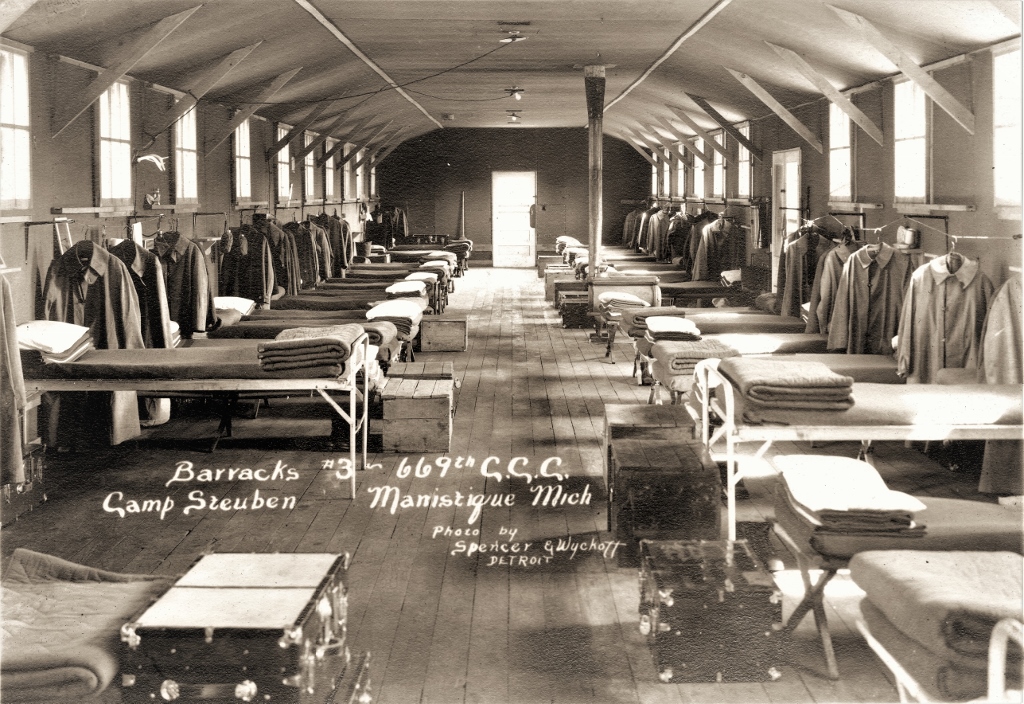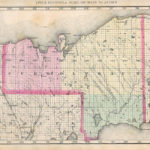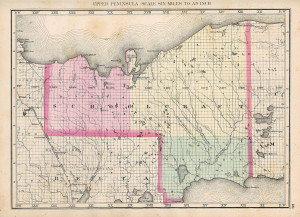
Interior view of Barracks No. 3 at Camp Steuben. The barracks measured 20’ by 112’. Photo courtesy Vivian Haight.
President Franklin Roosevelt’s Civilian Conservation Corp (CCC) was inaugurated on April 17, 1933 with the opening of Camp Roosevelt in the George Washington National Forest in Virginia. The program was designed to employ over 250,000 young men out of work during the Great Depression.
Camp Steuben in Schoolcraft County opened only 17 days later on May 4, 1933. The first recruits went through a two-week orientation at Camp Custer near Battle Creek, before heading north to the Upper Peninsula. One hundred and forty-one men from Custer were assigned to Camp Steuben and 212 others headed to Camp Kentucky in Alger County. Their journey was delayed five hours while waiting for a ferry to cross the Straits of Mackinac. Camp Steuben received additional recruits from Fort Sheridan in Illinois.


